Chemical Looping Systems for Fossil Energy Conversions
Preface. 1 Introduction. 1.1 Background. 1.1.1 Renewable Energy. 1.1.2 Fossil Energy Outlook. 1.2 Coal Combustion. 1.2.1 Energy Conversion Efficiency Improvement. 1.2.2 Flue Gas Pollutant Control Methods. 1.3 CO2 Capture. 1.4 CO2 Sequestration. 1.5 Coal Gasification. 1.6 Chemical Looping Concepts. 1.7 Chemical Looping Processes. 1.8 Overview of This Book. References. 2 Chemical Looping Particles. 2.1 Introduction. 2.2 Type I Chemical Looping System. 2.2.1 General Particle Characteristics. 2.2.2 Thermodynamics and Phase Equilibrium of Metals and Metal Oxides. 2.2.3 Particle Regeneration with Steam. 2.2.4 Reaction with Oxygen and Heat of Reaction. 2.2.5 Particle Design Considering Heat of Reaction. 2.2.6 Particle Preparation and Recyclability. 2.2.7 Particle Formulation and Effect of Support. 2.2.8 Effect of Particle Size and Mechanical Strength. 2.2.9 Carbon and Sulfur Formation Resistance. 2.2.10 Particle Reaction Mechanism. 2.2.11 Effect of Reactor Design and Gas-Solid Contact Modes.7 2.2.12 Selection of Primary Metal for Chemical Looping Combustion of Coal. 2.3 Type II Chemical Looping System. 2.3.1 Types of Metal Oxide. 2.3.2 Thermodynamics and Phase Equilibrium of Metal Oxide and Metal Carbonate. 2.3.3 Reaction Characteristics of Ca-Based Sorbents for CO2 Capture. 2.3.4 Synthesis of the High-Reactivity PCC-CaO Sorbent. 2.3.5 Reactivity of Calcium Sorbents. 2.3.6 Recyclability of Calcium Oxides. 2.4 Concluding Remarks. References. 3 Chemical Looping Combustion. 3.1 Introduction. 3.2 CO2 Capture Strategies for Fossil Fuel Combustion Power Plants. 3.2.1 Pulverized Coal Combustion Power Plants. 3.2.2 CO2 Capture Strategies. 3.3 Chemical Looping Combustion. 3.3.1 Particle Reactive Properties and Their Relationship with CLC Operation. 3.3.2 Key Design and Operational Parameters for a CFB-Based CLC System. 3.3.3 CLC Reactor System Design. 3.3.4 Gaseous Fuel CLC Systems and Operational Results. 3.3.5 Solid Fuel CLC Systems and Operational Results. 3.4 Concluding Remarks. References. 4 Chemical Looping Gasification Using Gaseous Fuels. 4.1 Introduction. 4.2 Traditional Coal Gasification Processes. 4.2.1 Electricity Production-Integrated Gasification Combined Cycle (IGCC). 4.2.2 H2 Production. 4.2.3 Liquid Fuel Production. 4.3 Iron-Based Chemical Looping Processes Using Gaseous Fuels. 4.3.1 Lane Process and Messerschmitt Process. 4.3.2 U.S. Bureau of Mines Pressurized Fluidized Bed Steam-Iron Process. 4.3.3 Institute of Gas Technology Process. 4.3.4 Syngas Chemical Looping (SCL) Process. 4.4 Design, Analysis and Optimization of the Syngas Chemical Looping (SCL) Process. 4.4.1 Thermodynamic Analyses of SCL Reactor Behavior. 4.4.2 ASPEN PLUS Simulation of SCL Reactor Systems. 4.4.3 Syngas Chemical Looping (SCL) Process Testing. 4.5 Process Simulation of the Traditional Gasification Process and the Syngas Chemical Looping Process. 4.5.1 Common Assumptions and Model Setup. 4.5.2 Description of Various Systems. 4.5.3 ASPEN PLUS Simulation, Results, and Analyses. 4.6 Example of SCL Applications-A Coal-to-Liquid Confi guration. 4.6.1 Process Overview. 4.6.2 Mass/Energy Balance and Process Evaluation. 4.7 Calcium Looping Process Using Gaseous Fuels. 4.7.1 Description of the Processes. 4.7.2 Reaction Characteristics of the Processes. 4.7.3 Analyses of the Processes. 4.7.4 Enhanced Coal-to-Liquid (CTL) Process with Sulfur and CO2 Capture. 4.8 Concluding Remarks. References. 5 Chemical Looping Gasification Using Solid Fuels. 5.1 Introduction. 5.2 Chemical Looping Gasification Processes Using Calcium-Based Sorbent. 5.2.1 CO2 Acceptor Process. 5.2.2 HyPr-Ring Process. 5.2.3 Zero Emission Coal Alliance Process. 5.2.4 ALSTOM Hybrid Combustion-Gasification Process. 5.2.5 Fuel-Flexible Advanced Gasification-Combustion Process. 5.2.6 General Comments. 5.3 Coal-Direct Chemical Looping (CDCL) Processes Using Iron-Based Oxygen Carriers. 5.3.1 Coal-Direct Chemical Looping Process-Configuration I. 5.3.2 Coal-Direct Chemical Looping Process-Configuration II. 5.3.3 Comments on the Iron-Based Coal-Direct Chemical Looping Process. 5.4 Challenges to the Coal-Direct Chemical Looping Processes and Strategy for Improvements. 5.4.1 Oxygen-Carrier Particle Reactivity and Char Reaction Enhancement. 5.4.2 Configurations and Conversions of the Reducer. 5.4.3 Performance of the Oxidizer and the Combustor. 5.4.4 Fate of Pollutants and Ash. 5.4.5 Energy Management, Heat Integration, and General Comments. 5.5 Process Simulation on the Coal-Direct Chemical Looping Process. 5.5.1 ASPEN Model Setup. 5.5.2 Simulation Results. 5.6 Concluding Remarks. References. 6 Novel Applications of Chemical Looping Technologies. 6.1 Introduction. 6.2 Hydrogen Storage and Onboard Hydrogen Production. 6.2.1 Compressed Hydrogen Gas and Liquefi ed Hydrogen. 6.2.2 Metal Hydrides. 6.2.3 Bridged Metal-Organic Frameworks. 6.2.4 Carbon Nanotubes and Graphite Nanofibers. 6.2.5 Onboard Hydrogen Production via Iron Based Materials. 6.3 Carbonation-Calcination Reaction (CCR) Process for Carbon Dioxide Capture. 6.4 Chemical Looping Gasification Integrated with Fuel Cells. 6.4.1 Chemical Looping Gasification Integrated with Solid-Oxide Fuel Cells. 6.4.2 Direct Solid Fuel Cells. 6.5 Enhanced Steam Methane Reforming. 6.6 Tar Sand Digestion via Steam Generation. 6.7 Liquid Fuel Production from Chemical Looping Gasification. 6.8 Chemical Looping with Oxygen Uncoupling (CLOU). 6.9 Concluding Remarks. References. Subject Index. Author Index.
{{comment.content}}
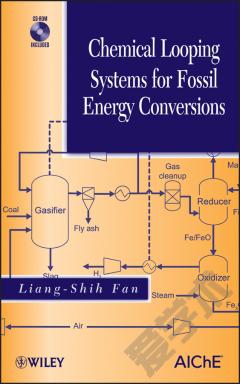
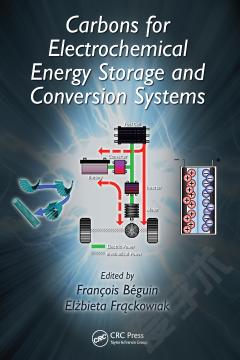


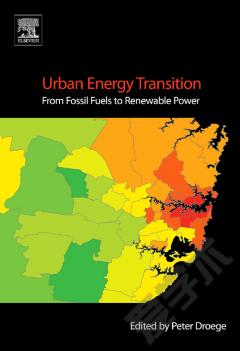
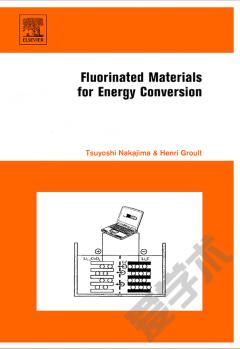
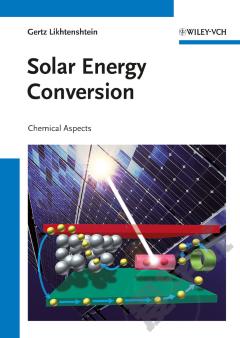

 京公网安备 11010802027623号
京公网安备 11010802027623号